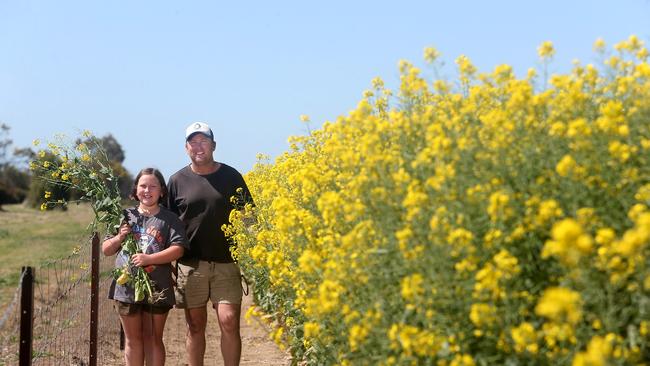Weather: Bureau of Meteorology declares El Nino
Thriving crops have held on despite warmer temperatures throughout much of the cropping belt. Full report here.
The official declaration of El Nino conditions by the Bureau of Meteorology has coincided with a run of warmer days.
After months of speculation and suggestions earlier this week that the Northern Territory, Queensland and NSW had a 70 per cent chance of El Nino, the call was made on Tuesday.
El Nino conditions typically draw rain away and result in dry conditions. El Ninos are described by the BOM as being part of the climate cycle and can happen every three to five years.
Meanwhile, warmer days throughout the cropping belts have farmers keeping a close eye on the forecast.
As the mercury shot to the 30 degrees in the north of the state in the past week, there were concerns about paddocks drying out.
At Rutherglen, temperatures hit 30 degrees on Monday.
In NSW, at Dubbo, where producers report widespread dry conditions, the mercury hit 33 on Monday with a forecast of milder conditions after Wednesday and heading through until Sunday. However, the lack of hot wind, which often accompanies the warmer temperatures at this time of the year, offered a slight reprieve.
The Bureau of Meteorology is still forecasting a 70 per cent chance of an El Nino developing, which is characterised by dry conditions.
Scott Arnold farms near Rupanyup, where temperatures got to 24 degrees at the weekend, and the forecast was for warmer weather to continue this week.
“It is relatively warm for this area, but the crops are looking good, and there is plenty of potential,” he said.
“It would be nice for these crops to get some finishing rain,” he said.
His canola crop was thriving, with an estimated yield potential of 3 tonnes per hectare.
Mr Arnold also grows wheat, barley, lentils, and vetch and runs sheep.
“This warmer weather wasn’t enough to do any damage, but we don’t want to see hot, dry winds,” he said.

Despite the warmer temperatures, he said the region had not yet escaped the risk of frost, which would be more costly to crops than the current warm conditions.
The warmest September day recorded by the Bureau of Meteorology at Rupanyup was in 1987, when the mercury soared to 32.2 degrees.
Chris Drum who farms at Banyena said the warm weather over the past few days hadn’t been too bad.
Temperatures in his area were set to rise to 26 degrees on Sunday and 28 on Monday next week.
“There is still soil moisture, and the crops are going okay, but you can’t beat a spring rainfall,” he said.
Mr Drum grows canola, wheat, barley, lentils and faba beans.




